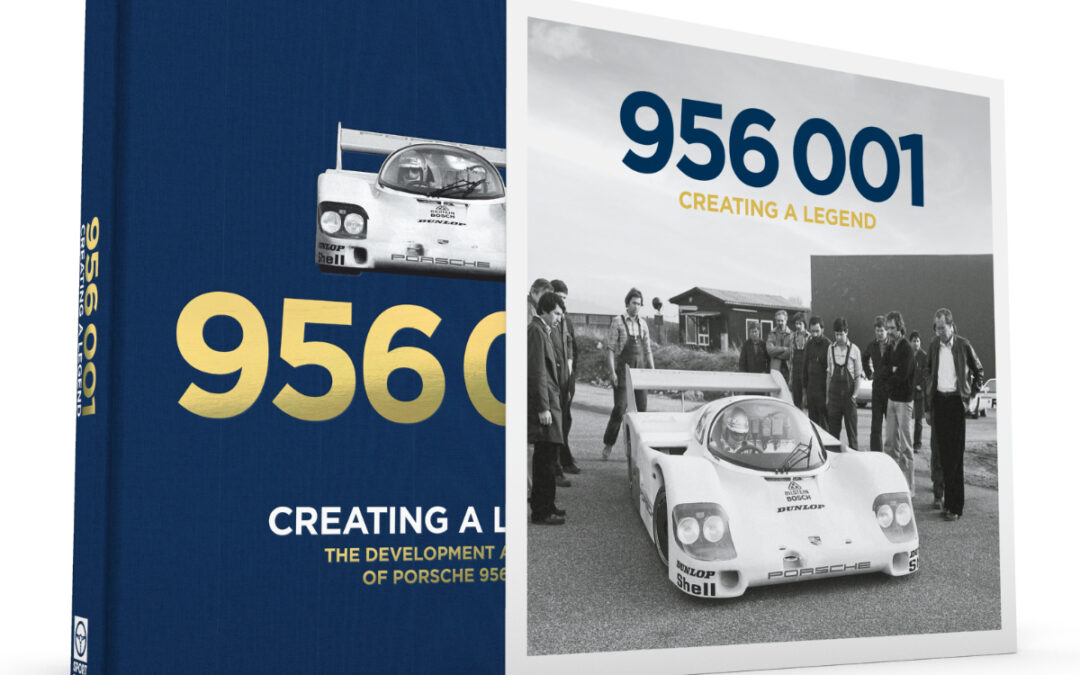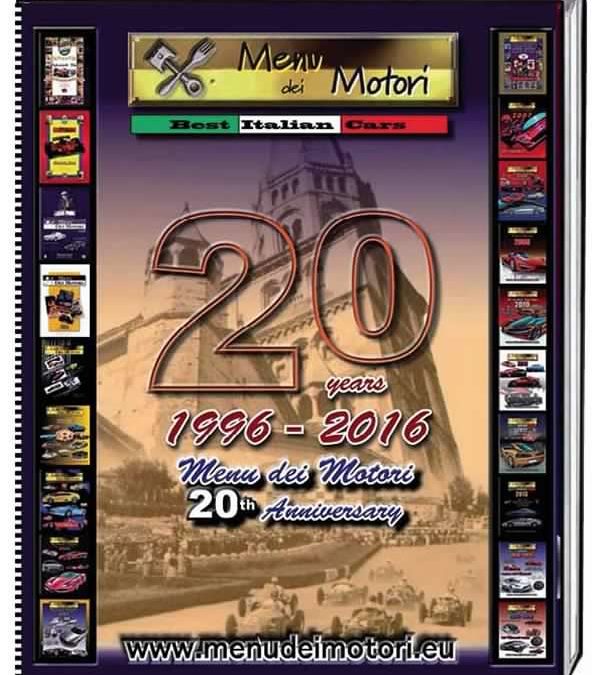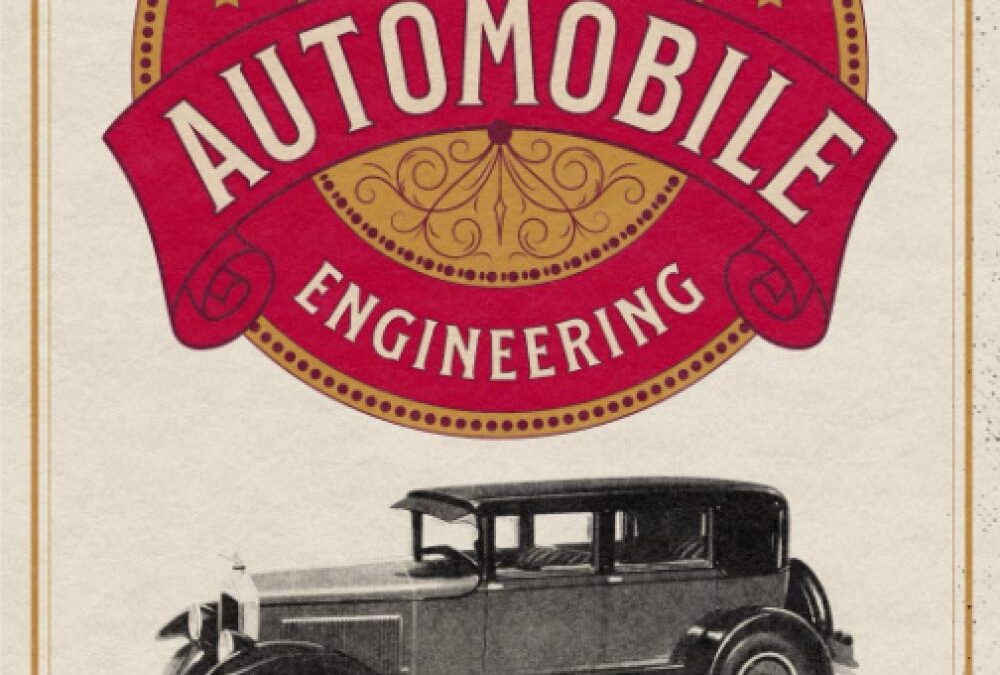
Volume 4 in this illustrated five-part series highlights ignitions, starters, generators, batteries, and electrical repairs.
The Classic Cars and Automobile Engineering series spans five volumes with more than 1500 images and diagrams for enthusiasts, collectors, and mechanics. Volume 4 includes:
– Digitally restored images and diagrams
– Big 7” x 10” pages
– Easy to read writing style
– Author’s original page layouts
– Classic type font and hand-drawn lettering
– Bold retro-style cover
Everything that you ever wanted to know about the inner workings of antique cars, trucks, bikes, engines, tractors, and more are included in this expansive tome of knowledge. Originally printed in 1926, this vast wealth of knowledge for classic car lovers was digitally restored and enhanced by writer-historian Mark Bussler and the CGR Publishing Restoration Workshop for a new generation of automobile enthusiasts.
This detailed, illustrated book collection is a must-have reference guide for all owners of period automobiles, motorcycles, airplanes, and anything powered by early 20th-century engines. Enlarged and printed on large 7” by 10” pages, The Classic Cars and Automobile Engineering series is designed for easy reading in the shop or library. Volume 4 focuses on electrical equipment and features elementary classic car electric system workings, ignition fundamentals, batteries, electrical repair, starting motors, and more.
Specific detailed subjects include magnetism, poles, laws, magnetic substances, dynamos, armature windings, field magnets, induction, self-induction, source of current, magnetos, spark plugs, induction coils, spark timing, magneto speeds, types of wiring systems, battery charging, cleaning a battery, replacing a jar, Edison Cell care, testing equipment, lamp troubles, and much more.
Table of contents:
– Chapter 1: Electrical Principles
– Chapter 2: Ignition Fundamentals
– Chapter 3: Ignition Systems
– Chapter 4: Ignition Operations
– Chapter 5: Motors
– Chapter 6: Generators
– Chapter 7: Storage Batteries
– Chapter 8: Electrical Repairs
– Chapter 9: Ford Car Electrical System
– Chapter 10: Ohm’s Law

Learn how to draw nine of the world’s best exotic cars in just a few simple steps using a proven basic technique that artists have used for centuries.
How to Draw Exotic Cars was designed for artists with a variety of talents who love exotic cars. This book is for kids or “kids at heart” from ages 10 to 100. If you are a beginner or have previous experience this book can help teach you how to start drawing like a pro or enhance your current skills.
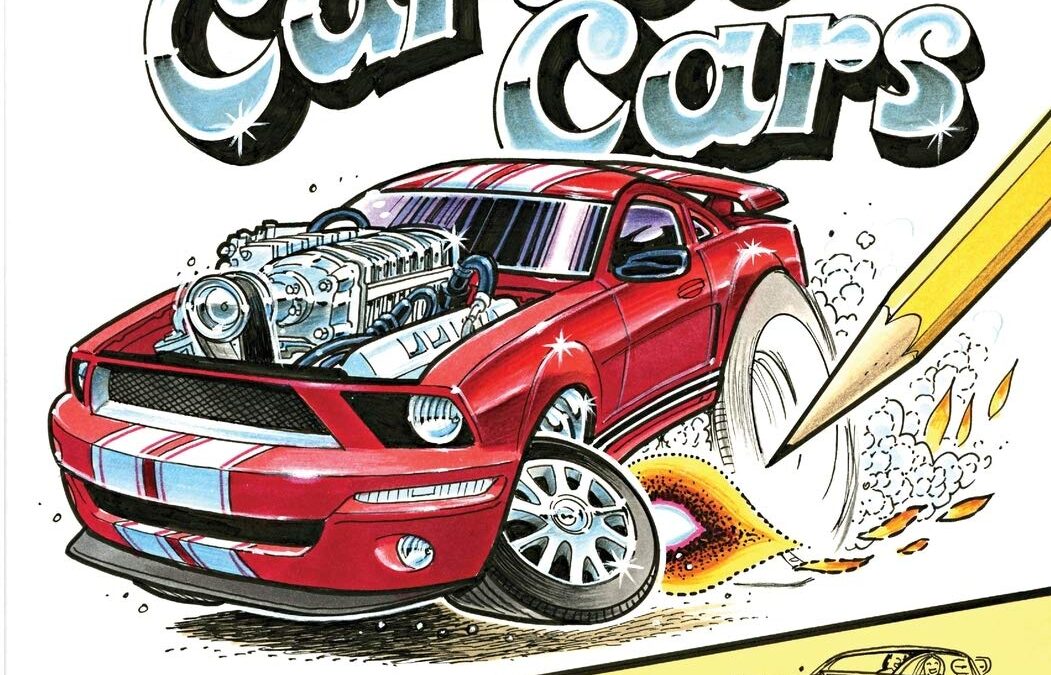
The name George Trosley may not be instantly recognizable to many motoring enthusiasts, but his work certainly is. Over the years, people have become familiar with George Trosley’s work through the magazine pages of CARtoons, Hot Rod Cartoons, Street Rodder, Car Craft, Popular Hot Rodding, Super Chevy, and many more. His Krass & Bernie cartoon ran for many years as did a “How to Draw” column that is the basis for this book.
In Trosley’s How to Draw Cartoon Cars, he takes you through the process step-by-step of drawing your favorite cars, starting with the basics such as profiles, point of view, speed, attitudes, custom graphics, and coloring. You learn to draw components including wheels, engines, and accessories. Then you are treated to step-by-step lessons on many different body styles: Corvettes, Mustangs, pickup trucks, off-road trucks, muscle cars, hot rods, and a few race cars as well.
If you are a budding artist, closet cartoonist, or just want to learn how to draw your own hot rod or muscle machine, this book shows you how it’s done. Trosley is one of the best in the business today, and this volume will be a great addition to your automotive or art library.

Bentley Speed 8 – Limited Edition
Motorsport Book of the Year Award 2023 (Royal Automobile Club)
Limited to 550 numbered copies
Exactly 20 years ago, Bentley won the 24 Hours of Le Mans for the sixth time. Just three years earlier, the project was born from within the brand. The later Bentley Motorsport Director Brian Gush secured the internal support of the corporate siblings VW and Audi and rolled out the Speed 8 project. There, where Bentley had established its motorsport heritage between 1924 and 1930, the aim was to revive the brand and make a clear statement. Already in the first year 2001 a small sensation was achieved with a podium finish, in 2003 the legendary double victory followed after intensive development and test work.
In this comprehensive book, former team members, engineers and drivers have their say and quite a few of them contributed their photos. Starting with wind tunnel tests, the construction of the eleven chassis, test drives and races, author Andrew Cotton covers the entire development and racing history of Bentley’s Le Mans winner of the modern era. In the course of his research he had access to all e-mails, documents and drawings of the team and he interviewed all important contemporary witnesses who were involved in the project. This standard work on perhaps one of the most beautifully designed sports cars of the modern era is rounded off with the chassis history of every Bentley Speed 8 built.
Hardcover in slipcase
Text in English
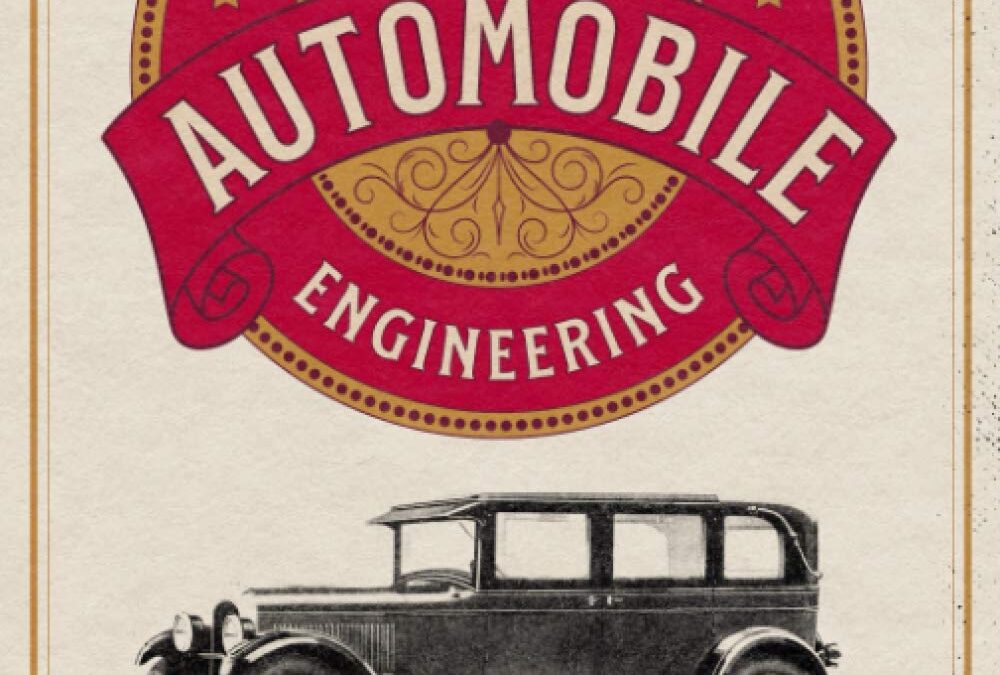
The definitive five-part book series about classic automobile engineering starts here with Volume 1.
The Classic Cars and Automobile Engineering series spans five volumes with more than 1500 images and diagrams for enthusiasts, collectors, and mechanics. Includes:
– Digitally restored images and diagrams
– Big 7” x 10” pages
– Easy to read writing style
– Author’s original page layouts
– Classic type font and hand-drawn lettering
– Bold retro-style cover
Everything that you ever wanted to know about the inner workings of antique cars, trucks, bikes, engines, tractors, and more is included in this expansive tome of knowledge. Originally printed in 1926 by the American Technical Society, this vast wealth of knowledge for classic car lovers was digitally restored and enhanced by writer-historian Mark Bussler and the CGR Publishing Restoration Workshop for a new generation of automobile enthusiasts.
This detailed, illustrated book collection is a must-have reference guide for all owners of period automobiles, motorcycles, and anything powered by early 20th-century engines. Enlarged and printed on large 7” by 10” pages, The Classic Cars and Automobile Engineering series is designed for easy reading in the shop or library. Subjects covered in Volume 1 include elementary engine principles – spark plug position – throttle valves – the inner workings of cylinders – crankshaft balance – water cooling systems – cone, disc, hydraulic, borg and beck clutches – four-cylinder, six-cylinder, eight-cylinder, and twelve-cylinder engines – much more.
Table of contents:
– Chapter 1: Outline of Automobile Construction
– Chapter 2: Explosion Engines
– Chapter 3: Cylinders
– Chapter 4: Pistons
– Chapter 5: Valves and Their Mechanism
– Chapter 6: Camshafts
– Chapter 7: Connecting Rods
– Chapter 8: Crankshafts
– Chapter 9: Crankcases
– Chapter 10: Carburetors
– Chapter 11: Cooling Systems
– Chapter 12: Manifold Design and Construction
– Chapter 13: Clutches
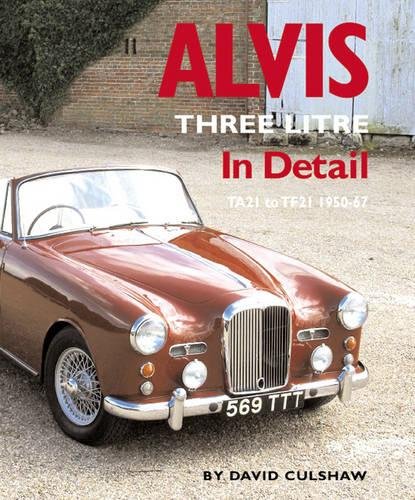
From its launch in 1950 to its demise in 1967, the Alvis Three Litre enjoyed a deserved reputation for effortless performance, exceptional surefootedness and stability, a high degree of driver friendliness, and irreproachable quality of construction. It was considered a rather exclusive car, coming as it did from a maker whose products always had a certain individuality. In addition, there remained through successive models something reassuringly traditional about its styling in both saloon and drophead forms; while never outdated, it displayed a timeless, discreet dignity unmoved by the more frivolous vagaries of fashion. All the while, in the background but ready to serve when called upon, was the Alvis works, whose concern for its cars and their owners was exemplary.Throughout production, the Three Litre was based on the same chassis and was powered by the same engine. This was a handsome and efficient short-stroke six-cylinder, conceived in order to provide the driver with ample power over a very wide rev range. Starting with an output of 83bhp in the early TA21, this robust unit was progressively developed to supply 150bhp in its final TF21 form while retaining the turbine smoothness, reliability and lack of temperament that it had become celebrated for. It was perfectly matched to its chassis and running gear, and those who have driven a Three Litre at speed will find the dynamic qualities of the contemporary rivals from Bentley or Jaguar rather less likeable.This book opens with an exposition of the background that led to the companys introduction of the Three Litre in 1950. Then comes a detailed technical analysis of the TA21, covering all aspects of the chassis, running gear, engine and transmission. This sets the scene for the chapters which follow, on the short-lived TB21 sports tourer, the TC21 and the uprated TC21/100, the Graber-inspired TC108G, the outstandingly handsome TD21 Series I and II, the TE21 and the TF21.Each of these receives comprehensive treatment, including differences from previous models, production changes and full chassis number number listings, along with notes on famous owners and screen appearances. The author provides extensive information on the coachbuilders who supplied Three Litre bodies, including Mulliners, Tickford, Graber, Willowbrook and Park Ward, and there are chapters devoted to the Alvis-powered Healey G Series sports car, the aborted Issigonis-designed Alvis TA350, and the ownership and use of Alvis Three Litre models today.Five outstanding examples of the cars have been specially photographed for this book and are featured in some 70 colour shots. There are also more than 140 black-and-white illustrations drawn from archives as well as from Alvis sales and publicity material. Devoted exclusively to the Three Litre, this book offers an in-depth examination of these excellent cars to provide a store of information for the many owners who care passionately about them, and serve as a tribute to the men who made them.
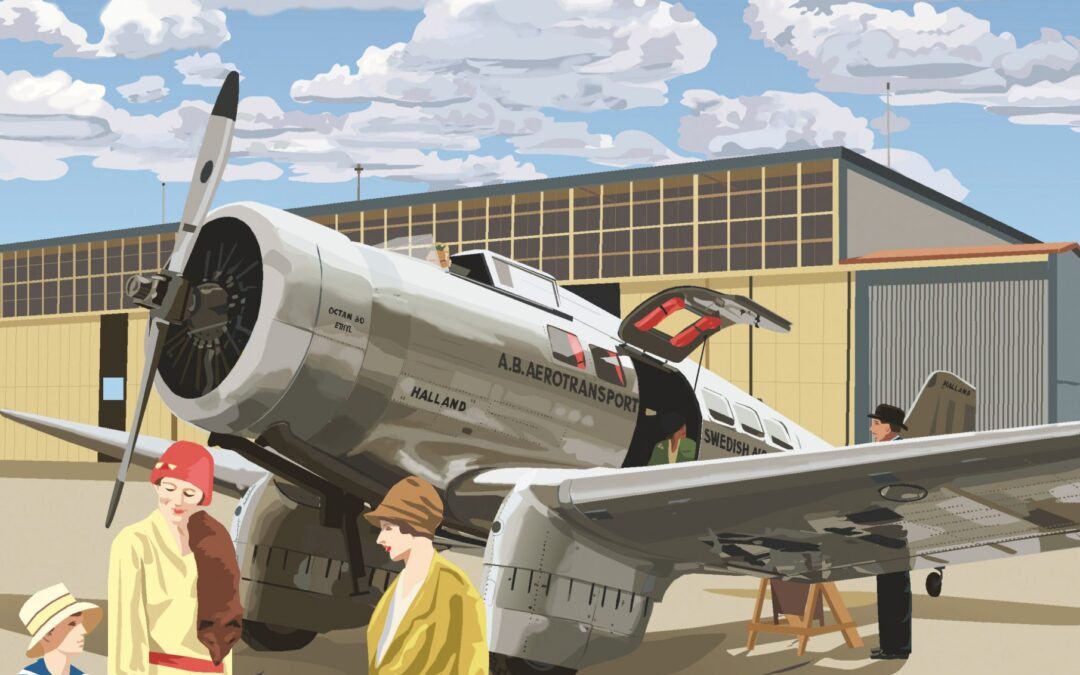
At the beginning of the 1930’s, night air mail services started to become more and more important for European Airlines. Navigation and safety equipment improved drastically and aircraft became much more economical to fly. The introduction of the fast Lockheed Orion by Swissair in April 1932 led to a true revolution within air transport. “Everyone wanted aircraft that flew faster than their existing obsolete Fokker- or Junkers aircraft.
In Sweden, AB Aerotransport’s Managing Director, Carl Florman, became interested in faster airliners as well. In May 1933, Bernt Balchen introduced them to the Northrop Gamma and was interested in a similar Aircraft for his airline. Offers were requested through Northrop representative, Norwegian aviator Bernt Balchen, AB Aerotransport ordered in October 1933, a passenger Delta 1C and in January 1934, a mail aircraft, the Delta 1E.
The operation of both aircraft was marked by problems and challenges for the pilots. It took them some time to master the aircraft. The Delta 1E never entered service, as it crashed on a trial mail flight. In 1937, ABA sold the Delta 1C to Spanish airline Lineas Aereas Postales Espaňolas – LAPE. It remained in civil and military service until well after World War II.
After intensive research, the author (Rob J. M. Mulder) describes in detail the history and operation of these two aircraft. But Bernt Balchen’s role in the story and the visit of a Northrop Gamma to Norway is described. Also, we learn about the history and development Northrop Alpha, Beta and Gamma, as well as the other Deltas. In addition, the military types and their use in Norway and Sweden and other countries is described. The book is illustrated with many photographs, tables, colour profiles by Juanita Franzi, Nils Mathisrud and Torstein Landström Wallmo. Mats Averkvist supplied drawings and was a great support for the author.
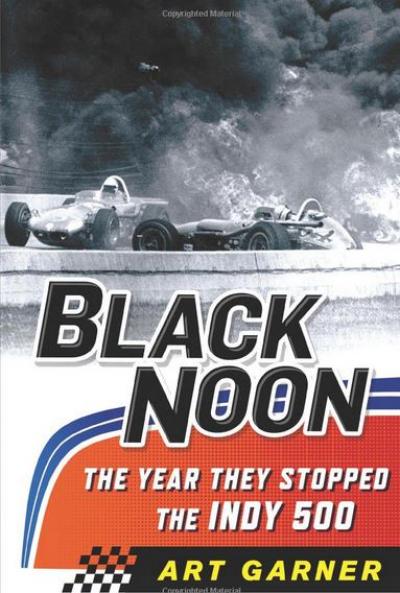
Winner of the 2014 Dean Batchelor Award, Motor Press Guild “Book of the Year”
Short-listed for 2015 PEN / ESPN Literary Award for Sports Writing
Before noon on May 30th, 1964, the Indy 500 was stopped for the first time in history by an accident. Seven cars had crashed in a fiery wreck, killing two drivers, and threatening the very future of the 500.
Black Noon chronicles one of the darkest and most important days in auto-racing history. As rookie Dave MacDonald came out of the fourth turn and onto the front stretch at the end of the second lap, he found his rear-engine car lifted by the turbulence kicked up from two cars he was attempting to pass. With limited steering input, MacDonald lost control of his car and careened off the inside wall of the track, exploding into a huge fireball and sliding back into oncoming traffic.
Closing fast was affable fan favorite Eddie Sachs. “The Clown Prince of Racing” hit MacDonald’s sliding car broadside, setting off a second explosion that killed Sachs instantly. MacDonald, pulled from the wreckage, died two hours later.
After the track was cleared and the race restarted, it was legend A. J. Foyt who raced to a decisive, if hollow, victory. Torn between elation and horror, Foyt, along with others, championed stricter safety regulations, including mandatory pit stops, limiting the amount a fuel a car could carry, and minimum-weight standards.
In this tight, fast-paced narrative, Art Garner brings to life the bygone era when drivers lived hard, raced hard, and at times died hard. Drawing from interviews, Garner expertly reconstructs the fateful events and decisions leading up to the sport’s blackest day, and the incriminating aftermath that forever altered the sport.
Black Noon remembers the race that changed everything and the men that paved the way for the Golden Age of Indy car racing.
Soft Cover
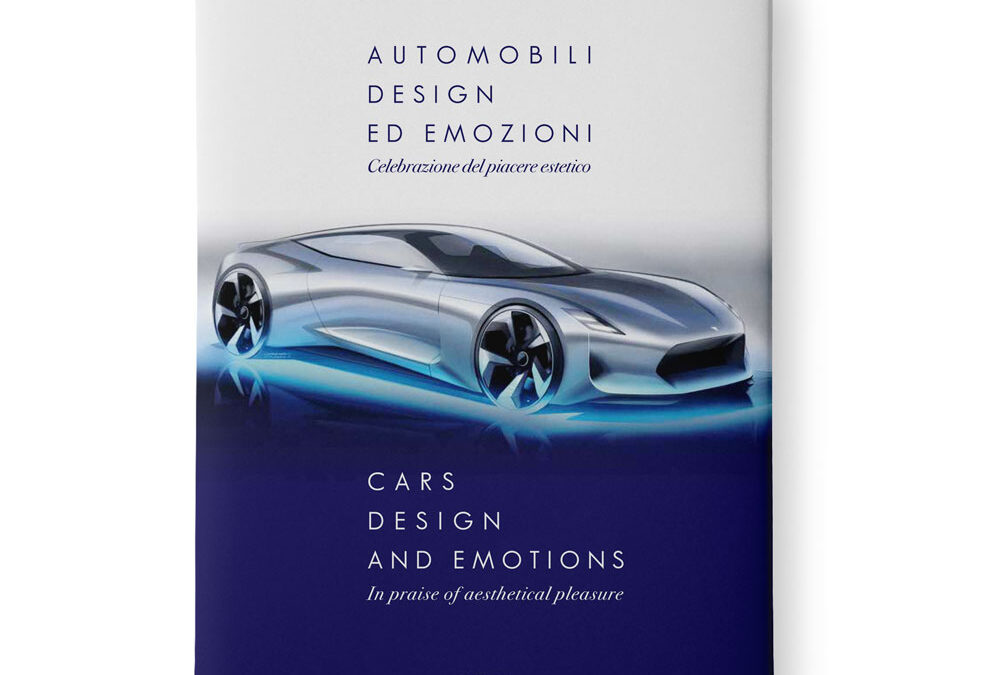
A celebration of aesthetic pleasure
A leading figure in the sector of car design (with important roles in the Peugeot-Citroën Group and at Pininfarina), the author draws his inspiration from the fundamental role that aesthetic gratification has always played in the relationship between man and the automobile.
Among the topics addressed, the birth and evolution of the profession of automotive designer, with extensive historical references, linked to the great ‘coachbuilders’ of the 1920-1960s period and to the evolution of the last 30 years, which led to the creation of the Style Centres of the major manufacturers, no longer integrated and therefore subordinate to technical management.
Starting from personal experience, considerable space is dedicated to the problems and choices that a car designer must inevitably face, reconciling the artistic side with the industrial context in which he operates. Concepts and rules that allow you to see the birth of a model that will be mass-produced, starting from the first sketches on a white sheet of paper. With concrete examples, referring to cars from Citroën, Peugeot, Maserati and Pininfarina.
The book also includes an appendix, dedicated to the most famous car designers of yesterday and today, which allows you to find out who created the style of famous cars, in many cases generically attributed to the manufacturer or the coachbuilder, where the designer himself was working…
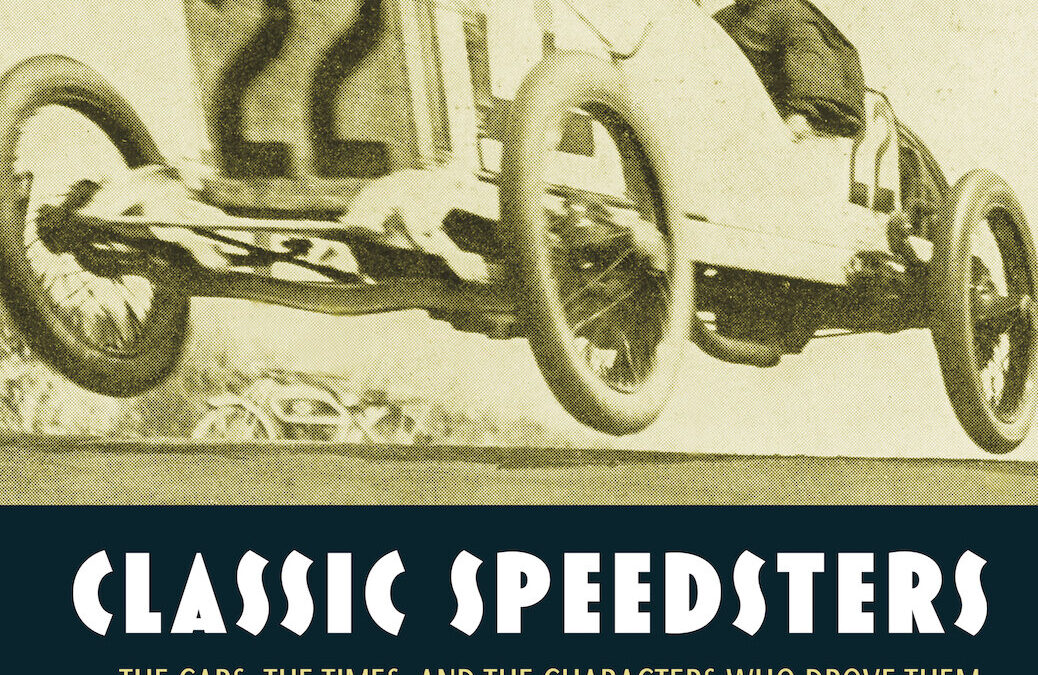
12 Chapters, 12 Car Companies, 12 Famous Owners And a collection of speedsters that will inform and entertain!
Have you ever wondered when and how the hotrod movement started? Or speed and endurance events? Landspeed racing? Hillclimbing? Or anything involving power, speed, or just having some fun in an automobile? This book—Classic Speedsters—covers all of that, and much more.
Classic Speedsters: The Cars, The Times, and The Characters Who Drove Them chronicles the most significant vehicles ever to have traveled American roads and racetracks. Speedsters were the pizzazz cars of their era. Speedsters were owned by entertainers, captains of industry, the wealthy, and in some cases, the everyday guy or gal. They were often expensive, but they were always fast and sexy. Speedsters were America’s first sports cars.
Each chapter frames the birth and evolution of a company that produced a speedster model in its lineup and includes a biography of a famous owner of the period. This book traces the journey of the speedster concept across several time periods, from 1894 to 1970. It examines the speedster’s story among 12 automotive companies, 11 of which were American.
This is the first automotive book to study the speedster concept in depth. A broad swath of speedsters from 12 different manufacturers (actually—there are 13 companies in the book) are examined in order to distill the essence of this singular model.
The companies and the speedsters that they produced are framed within the context of their time to better understand how technology and market forces shaped the success and failure of these companies (and their cars). The people who were drawn to and purchased these vehicles—why did they? This too is examined and discussed.
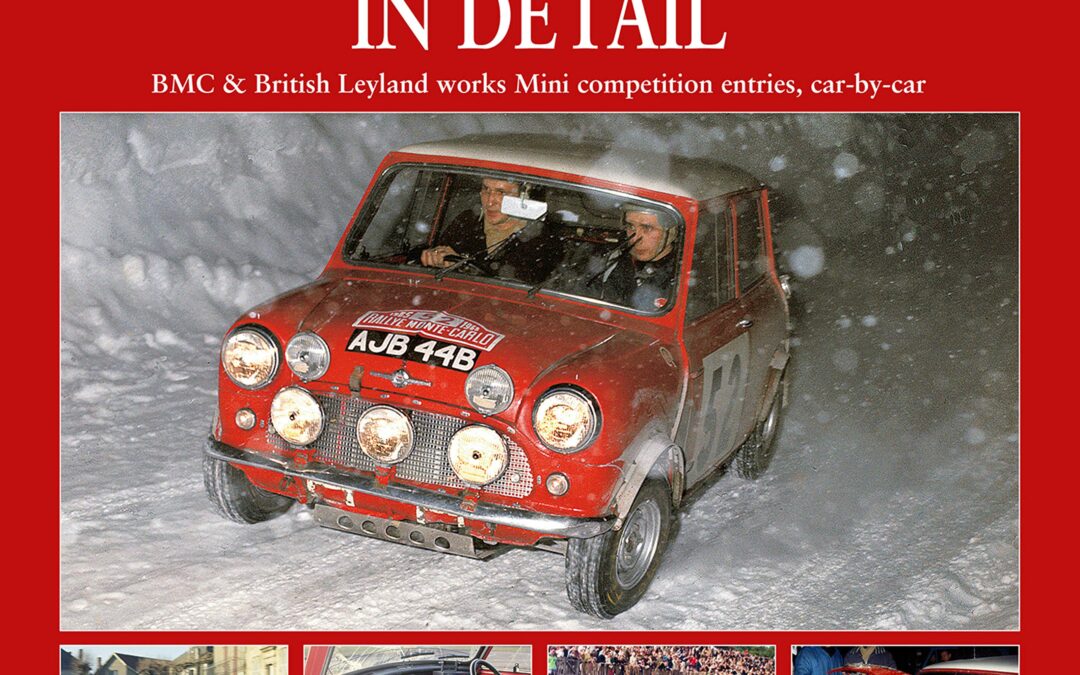
The works Minis had a long and distinguished competition history between 1959 and 1970, when British Leyland bosses closed the Abingdon Competition Department. The car started its competition career chasing class awards with the diminutive 850cc Mini, but once race car designer John Cooper persuaded BMC that they should build a hot version, the Mini Cooper was born and things moved up a gear.
With the introduction of the Mini Cooper S, the car soon became a world beater. Winning the 1964 Monte Carlo Rally in the hands of Paddy Hopkirk was a watershed moment which the Abingdon team repeated three times. During that 11-year period, 77 works Minis were built, competing in more than 300 events, most of them international rallies. The 1969 season, when the works Minis went racing, is also covered, along with the rallycross events.
Works Minis in Detail covers each one of those 77 cars which, in their distinctive red and white paintwork, were a force be reckoned with wherever they competed. Build details of every car are provided, drawn from factory build sheets, with information also on when cars were reshelled and identities swapped. The details of the events entered and the drivers are the result of analysing hundreds of contemporary race and rally reports.
The result is the most in-depth study of the works Minis ever published, made possible by years of research by Robert Young, a lifelong Mini enthusiast. As the Mini Cooper Register’s ex-works registrar, club chairman and for many years archivist, he is well placed to write with authority. A proud owner himself, he has intimate knowledge of the little red cars.
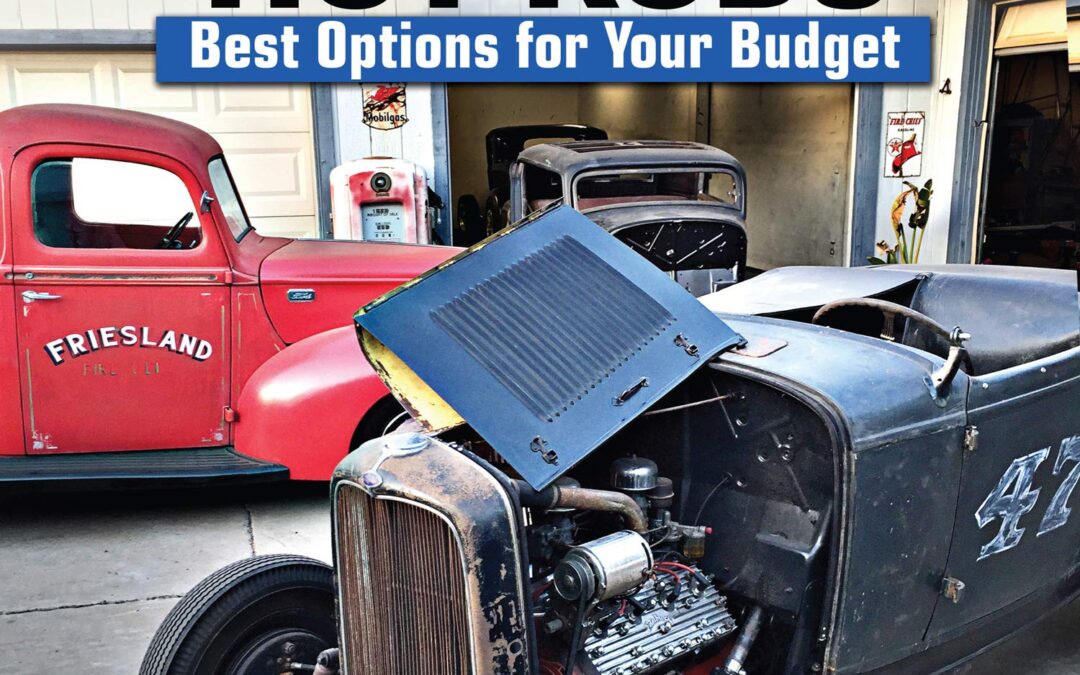
Learn how to build an affordable hot rod following the advice of the masters!
In How to Build Affordable Hot Rods, author and lifelong hot rod aficionado Tony Thacker takes you through the process of building a hot rod on a budget. Drawing on his own extensive experience of both buying and building rods, Thacker explores the good, the bad, and the ugly. The good was setting a land speed record at Bonneville, the bad was buying a rod from which the previous owner had “swapped out” the good engine, and the ugly–well, let’s just not go there. How to Build Affordable Hot Rods includes extensive how-to sections that cover step-by-step chassis builds for Model A, 1932, and 1936 Fords, including front- and rear-end setups. The in-depth chassis builds are complimented with sections on powertrain choices, bodywork and roof chops, wheels and tires, and wiring and paint. Also included are chapters on interiors and the all-important details that individualize any project to ensure that it stands out from the rest.
When Henry Ford introduced his beloved Model T, he unwittingly gave the average person the means to go racing. Prior to the T, racing was mostly a sport of the rich, but that changed with the Model T. Stripped of fenders and hopped up with speed parts, T speedsters ruled, and it wasn’t long before enthusiasm on the track translated to the street and the term hot rod entered the vernacular.
Of course, it didn’t need to be a Ford (and still doesn’t), but the easiest and therefore cheapest route to Hot Rod Boulevard is down the Ford road. The journey accelerated after World War II, as hot rodding boomed with the growth of speed shops, car shows, drag racing, talented and trained GIs returning home, and the launch of Hot Rod magazine to spread the gospel far and wide. More than 100 years after the original Model T, hot rodding remains alive and well in the Australasia, Europe, and (of course) its birthplace the US.
Learn from the best and get started building your affordable hot rod today!

How to Build a Motorcycle leads you through all the key stages – from initially finding the right project for your skill level, to sourcing a base bike and safely taking on some full-on bike-building tasks. With clear, easy-to-follow instructions, proper advice and specially commissioned step-by-step illustrations throughout it is an ideal aid to getting your hands oily. Written by Gary Inman, the co-founder of independent motorcycle magazine Sideburn, and illustrated by Adi Gilbert who is best known for his bicycle and motorcycle drawings whose clients include Harley-Davidson, Guy Martin, Wired magazine, Sideburn magazine and Nike, this is a must-have for all motorcycle lovers.
Read this book, even dip in and out where relevant. If it makes sense, schedule some time, clear your mind, pull on some old clothes, grab your toolbox and get going. The chapters in How to Build a Motorcycle will tell you how to complete a huge variety of tasks that will allow even the greenest of novices to get their hands dirty and start modifying with purpose. If you belong to this camp, start with some of the low-input, high-reward jobs, such as fitting bars, swapping the rear shocks or wiring in a new tail light. Even though these require relatively little work, they’ll transform the look of your bike, and completing them will fill you with confidence to undertake the more difficult jobs, such as fitting more modern front forks or even making your own frame.
The book comes with a glossy 32-page section on finished bikes and is a reference and the perfect gift for all fans, from those who merely like to tinker, to riders taking on a full build.

The amazing story of the people who made possible Richard Nobles extreme projects on land, at sea and in the air
Richard Noble’s first attempt to build a record car, Thrust1, ended in a high-speed crash and the sale of the wreckage to a scrapyard. Next came the roller coaster ride of Thrust2, which was developed to attack the World Land Speed Record at Bonneville with Noble at its controls; after innumerable setbacks, including sponsor withdrawals, delays and a rebuild after a 250 mph crash, success was finally achieved with a new record of 633 mph in 1983 at Black Rock Desert in Nevada. Following that, Noble established the UK-based ARV Aircraft company to create an innovative and beautiful metal airplane with safe forward-swept wings and a special Hewland engine, all achieved in 13 months from start-up with no design and little money.
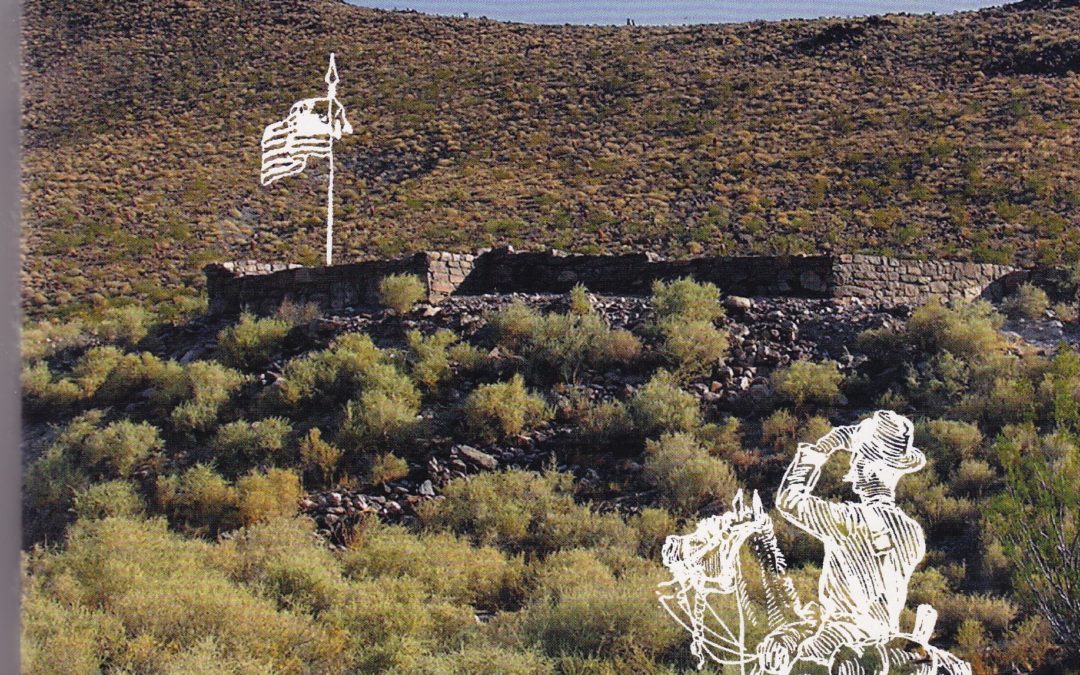
This book details the history of the Mojave Road forts established across the East Mojave by the U. S. Army starting in 1859. These lonely posts were built to protect settlers, miners, and the mails from Indian resistance. They mark a path of western migration across a harsh and unforgiving land. Published April 2007. In 1859, the U. S. Army began establishing a line of fortifications stretching across the East Mojave to protect settlers, miners, and the mails in one the most harsh and remote desert regions of the American frontier. Tales of the Mojave Road: The Military recounts the stories of the bluecoated soldiers manning these lonely military outposts on the Mojave Road. These narratives have been painstakingly resconstructed from detailed research in the records of the United States Army, National Archives and other sources, This is the rich military history behind the remnants of the fast-disappearing Army artifacts of the Mojave Desert. The Military was researched and authored by renowned desert historian Dennis Casebier. The book is perfection bound, printed on high quality paper, containing 238 pages with a full color cover featuring a beautiful modern day image of Fort Piute. Inside is a historic map, drawn by Henry Martyn Robert in 1869, depicting the Mojave Road from the Pacific Coast to the Colorado River. The book features a portraiture section of the military men profiled in the narrative, is illustrated with photographs and period line art, and is enriched with bibliographical references and an index.

Do you dream of restoring your own classic car? Or do you simply need affordable, time-tested techniques to keep your older model car looking good and on the road? Sargent provides the fundamentals you need to get started!
Drawing upon his extensive experience as a skilled instructor and metal man, Sargent details the basics of sheet metal repair with techniques that have been proven successful on the job and on the road. In this classic primer, Sargent demystifies metalwork with effective techniques for straightening sheet metal. With its emphasis on the basics, Automobile Sheet Metal Repair stands apart from other books on this subject for its remarkably detailed and precise directions. This guide imparts the essentials of everything you need to understand to get started, including:
- Working properties of sheet metal
- Shapes, reinforcements, and damage conditions common to body panels
- Basic repair operations used in metal straightening
- Uses and limitations of hand tools and shop equipment
Sargent asserts that a strong foundation of knowledge and determination are the key tools for success in this line of work. Initially published in 1961, Automobile Sheet Metal Repair remains a timeless primer that furnishes the fundamentals and provides an effective alternative to parts replacement for professional and shadetree mechanics interested in old-school bodywork.

Hot Wheels: From 0 to 50 at 1:64 Scale shares the inspiring journey of the die-cast vehicles that started out as a new twist on toy cars and became a worldwide phenomenon. Officially licensed with Mattel, this in-depth retrospective reveals what makes these cars unique, how the models are designed, and all the work that goes into the play to ensure Hot Wheels maintain their position as the greatest toy cars ever made.
This special anniversary book is lavishly illustrated with rare design drawings and prototypes from Mattel’s archives as well as fantastic photos of all of the great Hot Wheels vehicles from across their 50-year history—and it comes in a replica Hot Wheels car-carrying case. It’s the perfect vehicle for Hot Wheelsfans of all ages!

West Coast Wild
California s architectural anomalies
At the dawn of the automobile age, Americans predilection for wanderlust prompted a new wave of inventive entrepreneurs to cater to this new mode of transportation. Starting in the 1920s, attention-grabbing buildings began to appear that would draw in passing drivers for snacks, provisions, souvenirs, or a quick meal. The architectural establishment of the day dismissed these roadside buildings as monstrosities .
Yet, they flourished, especially along America s Sunbelt, and in particular, in Southern California, as proprietors indulged their creative impulses in the form of giant, eccentric constructions from owls, dolls, pigs, and ships, to coffee pots and fruit. Their symbolic intent was guileless, yet they were marginalized by history. But, over the past 40 years, California’s architectural anomalies have regained their integrity, and are now being celebrated in this freshly revised compendium of buildings, California Crazy.
Brimming with the best examples of this architectural genre, California Crazy includes essays exploring the influences that fostered the nascent architectural movement, as well as identifying the unconventional landscapes and attitudes found on Los Angeles and Hollywood roadsides which allowed these buildings to flourish in profusion.
In addition, California Crazy features David Gebhard’s definitive essay, which defined this vernacular movement almost forty years ago. The California Crazy concept is expanded to include domestic architecture, eccentric signage, and the automobile as a fanciful object.








